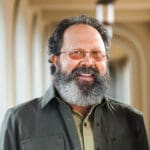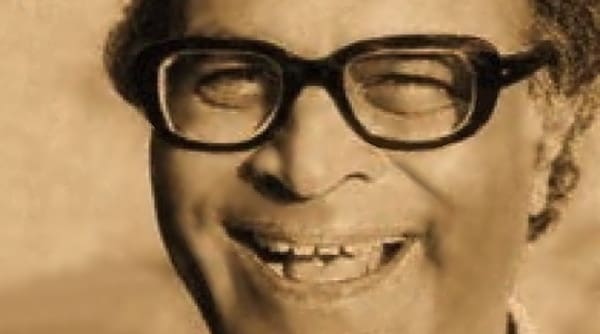This past week I ran into a man from India and I asked him about the popularity of the writings of Fr. Anthony de Mello in India. His answer was a bit distressing so I decided to offer a second post that contains more insight from Pope Benedict the XVI on de Mello’s writings (he was Cardinal Ratzinger when he wrote what you will find below). What you will find below are two things:
- The original warning issued by the Congregation for the Doctrine of the Faith regarding the “grave” theological errors in Fr. Anthony de Mello’s writings.
- Further explanation and examples from Pope Benedict on specific issues in his writings.
The gentleman I ran into seemed to indicate that it was OK for folks to read Fr. Anthony de Mello’s writings now. The fact is, the Congregation for the Doctrine of the Faith has not issued any retraction or modification on his writings. The errors are “grave” and Fr. de Mello passed away two years before the warning from the Holy See was issued. So, the warning is still in effect and anyone seeking to learn authentic Catholic spirituality should have absolutely nothing to do with Fr. Anthony de Mello’s writings.
THE WARNING PROVIDED BY THE HOLY SEE ABOUT FR. ANTHONY DE MELLO
CONGREGATION FOR THE DOCTRINE OF THE FAITH
NOTIFICATION CONCERNING THE WRITINGS OF
FATHER ANTHONY DE MELLO, SJ
The Indian Jesuit priest, Father Anthony de Mello (1931-1987) is well known due to his numerous publications 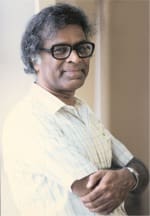 which, translated into various languages, have been widely circulated in many countries of the world, though not all of these texts were authorized by him for publication. His works, which almost always take the form of brief stories, contain some valid elements of oriental wisdom. These can be helpful in achieving self-mastery, in breaking the bonds and feelings that keep us from being free, and in approaching with serenity the various vicissitudes of life. Especially in his early writings, Father de Mello, while revealing the influence of Buddhist and Taoist spiritual currents, remained within the lines of Christian spirituality. In these books, he treats the different kinds of prayer: petition, intercession and praise, as well as contemplation of the mysteries of the life of Christ, etc.
which, translated into various languages, have been widely circulated in many countries of the world, though not all of these texts were authorized by him for publication. His works, which almost always take the form of brief stories, contain some valid elements of oriental wisdom. These can be helpful in achieving self-mastery, in breaking the bonds and feelings that keep us from being free, and in approaching with serenity the various vicissitudes of life. Especially in his early writings, Father de Mello, while revealing the influence of Buddhist and Taoist spiritual currents, remained within the lines of Christian spirituality. In these books, he treats the different kinds of prayer: petition, intercession and praise, as well as contemplation of the mysteries of the life of Christ, etc.
But already in certain passages in these early works and to a greater degree in his later publications, one notices a progressive distancing from the essential contents of the Christian faith. In place of the revelation which has come in the person of Jesus Christ, he substitutes an intuition of God without form or image, to the point of speaking of God as a pure void. To see God it is enough to look directly at the world. Nothing can be said about God; the only knowing is unknowing. To pose the question of his existence is already nonsense. This radical apophaticism leads even to a denial that the Bible contains valid statements about God. The words of Scripture are indications which serve only to lead a person to silence. In other passages, the judgment on sacred religious texts, not excluding the Bible, becomes even more severe: they are said to prevent people from following their own common sense and cause them to become obtuse and cruel. Religions, including Christianity, are one of the major obstacles to the discovery of truth. This truth, however, is never defined by the author in its precise contents. For him, to think that the God of one’s own religion is the only one is simply fanaticism. “God” is considered as a cosmic reality, vague and omnipresent; the personal nature of God is ignored and in practice denied.
Father de Mello demonstrates an appreciation for Jesus, of whom he declares himself to be a “disciple.” But he considers Jesus as a master alongside others. The only difference from other men is that Jesus is “awake” and fully free, while others are not. Jesus is not recognized as the Son of God, but simply as the one who teaches us that all people are children of God. In addition, the author’s statements on the final destiny of man give rise to perplexity. At one point, he speaks of a “dissolving” into the impersonal God, as salt dissolves in water. On various occasions, the question of destiny after death is declared to be irrelevant; only the present life should be of interest. With respect to this life, since evil is simply ignorance, there are no objective rules of morality. Good and evil are simply mental evaluations imposed upon reality.
Consistent with what has been presented, one can understand how, according to the author, any belief or profession of faith whether in God or in Christ cannot but impede one’s personal access to truth. The Church, making the word of God in Holy Scripture into an idol, has ended up banishing God from the temple. She has consequently lost the authority to teach in the name of Christ.
With the present Notification, in order to protect the good of the Christian faithful, this Congregation declares that the above-mentioned positions are incompatible with the Catholic faith and can cause grave harm.
The Sovereign Pontiff John Paul II, at the Audience granted to the undersigned Cardinal Prefect, approved the present Notification, adopted in the Ordinary Session of this Congregation, and ordered its publication.
Rome, from the offices of the Congregation for the Doctrine of the Faith, June 24, 1998, the Solemnity of the Birth of John the Baptist.
+ Joseph Card. Ratzinger
Prefect
+ Tarcisio Bertone, S.D.B.
Archbishop Emeritus of Vercelli
Secretary
Given the “grave” theological errors of Fr de Mello, his materials should obviously be completely avoided as even his earlier works, as noted by Cardinal Ratzinger, are tainted. As well, any spiritual director who would recommend his works should be suspect regarding their understanding of central Christian truths and spiritual theology.
As I noted in the beginning of this post, if we want to learn about prayer and ever-deepening devotion to God, the Church has no lack of rich texts and insights offered by scripture, the saints, and those who faithfully reflect their wisdom in our time.
For the update of this piece I have included further explanatory notes from Cardinal Ratzinger. These notes give more specifics behind his very good decision to issue this notification:
EXPLANATORY NOTES ABOUT FR. ANTHONY DE MELLO’s GRAVE ERRORS
The writings of the Indian Jesuit priest, Father Anthony de Mello (1931-1987) have circulated extensively in many countries of the world and among people of widely different backgrounds.1 In these works, which often take the form of short anecdotes presented in an accessible and easy-to-read style, Father de Mello collected elements of eastern wisdom which can be helpful in achieving self-control, in breaking the attachments and affections that keep us from being truly free, in avoiding selfishness, in facing life’s difficulties with serenity without letting ourselves be affected by the world around us, while at the same time being aware of its riches. It is important to indicate these positive features which can be found in many of Father de Mello’s writings. Particularly in the works dating from his early years as a retreat director, while revealing the influence of Buddhist and Taoist spiritual currents, Father de Mello remained in many respects within the boundaries of Christian spirituality. He speaks of waiting in silence and prayer for the coming of the Spirit, pure gift of the Father (Contact With God: Retreat Conferences, 3-7). He gives a very good presentation of the prayer of Jesus and of the prayer that Jesus teaches us, taking the Our Father as his basis (ibid., 42-44). He also speaks of faith, repentance and contemplation of the mysteries of Christ’s life according to the method of Saint Ignatius. In his work Sadhana: A Way to God, published for the first time in 1978, Jesus occupies a central place, particularly in the last part (“Devotion,” 99-134). He speaks of the prayer of petition and intercession as taught by Jesus in the Gospel, of the prayer of praise and of invocation of the name of Jesus. His book is dedicated to the Blessed Virgin Mary, a model of contemplation (ibid., 4-5).
But already in this work he develops his theory of contemplation as awareness, which seems to be not lacking in ambiguity. Already at the beginning of the book, the concept of Christian revelation is equated with that of Lao-tse, with a certain preference for the latter: “‘Silence is the great revelation,’ said Lao-tse. We are accustomed to think of Scripture as the revelation of God. And so it is. I want you now to discover the revelation that silence brings” (9; cf. ibid., 11). In exercising an awareness of our bodily sensations, we are already communicating with God, a communication explained in these terms: “Many mystics tell us that, in addition to the mind and heart with which we ordinarily communicate with God we are, all of us, endowed with a mystical mind and mystical heart, a faculty which makes it possible for us to know God directly, to grasp and intuit him in his very being, though in a dark manner…” (ibid., 25). But this intuition, without images or form, is that of a void: “But what do I gaze into when I gaze silently at God? An imageless, formless reality. A blank!” (ibid., 26). To communicate with the Infinite it is necessary “to gaze at a blank.” And thus one arrives at “the seemingly disconcerting conclusion that concentration on your breathing or your body sensations is very good contemplation in the strict sense of the word” (ibid., 29-30).2 In his later works, he speaks of “awakening,” interior enlightenment or knowledge: “How to wake up? How are we going to know we’re asleep? The mystics, when they see what surrounds them, discover an extra joy flowing in the heart of things. With one voice they speak about this joy and love flowing everywhere… How attain that? Through understanding. By being liberated from illusions and wrong ideas” (Walking on Water, 77-78; cf. Call To Love, 97). Interior enlightenment is the true revelation, far more important than the one which comes to us through Scripture: “A Guru promised a scholar a revelation of greater consequence than anything contained in the scriptures… When you have knowledge you use a torch to show the way. When you are enlightened you become a torch” (The Prayer of the Frog I, 86-87).
Holiness is not an achievement, it is a Grace. A Grace called Awareness, a grace called Looking, observing, understanding. If you would only switch on the light of awareness and observe yourself and everything around you throughout the day, if you would see yourself reflected in the mirror of awareness the way you see your face reflected in a looking glass… and if you observed this reflection without any judgment or condemnation, you would experience all sorts of marvellous changes coming about in you (Call To Love, 96).
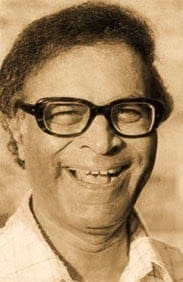 In these later writings, Father de Mello had gradually arrived at concepts of God, revelation, Christ, the final destiny of the human person, etc., which cannot be reconciled with the doctrine of the Church. Since many of his books do not take the form of discursive teaching, but are collections of short tales which are often quite clever, the underlying ideas can easily pass unnoticed. This makes it necessary to call attention to certain aspects of his thought which, in different forms, appear in his work taken as a whole. We will use the author’s own texts which, with their particular features, clearly demonstrate the underlying thinking.
In these later writings, Father de Mello had gradually arrived at concepts of God, revelation, Christ, the final destiny of the human person, etc., which cannot be reconciled with the doctrine of the Church. Since many of his books do not take the form of discursive teaching, but are collections of short tales which are often quite clever, the underlying ideas can easily pass unnoticed. This makes it necessary to call attention to certain aspects of his thought which, in different forms, appear in his work taken as a whole. We will use the author’s own texts which, with their particular features, clearly demonstrate the underlying thinking.
On various occasions, Father de Mello makes statements about God which ignore his personal nature, if not explicitly denying it, and reduce God to a vague and omnipresent cosmic reality. According to the author, no one can help us find God just as no one can help a fish in the sea find the ocean (cf. One Minute Wisdom, 67; Awareness, 103). Similarly, God and each of us are neither one nor two, just as the sun and its light, the ocean and the wave, are neither one nor two (cf. One Minute Wisdom, 34). With even greater clarity the problem of a personal Deity is presented in these terms: “Dag Hammarskjöld, the former UN Secretary-General, put it so beautifully: ‘God does not die on the day we cease to believe in a personal deity…’” (Awareness, 126; the same idea is found in “La iluminación es la espiritualidad,” 60). “If God is love, then the distance between God and you is the exact distance between you and the awareness of yourself ?” (One Minute Nonsense, 266).
Following from a unilateral and exaggerated apophaticism which is the consequence of the above-mentioned concept of God, criticism and frequent irony are directed toward any attempt at language of God. The relationship between God and creation is 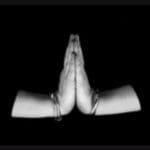 frequently expressed with the Hindu image of the dancer and dance: I see Jesus Christ and Judas, I see victims and persecutors, the killers and the crucified: one melody in the contrasting notes…one dance moving through different steps… Finally, I stand before the Lord. I see him as the Dancer and all of this maddening, senseless, exhilarating, agonizing, splendorous thing that we call life as his dance…(Wellsprings: A Book of Spiritual Exercises, 200-201; The Song of the Bird, 16).
frequently expressed with the Hindu image of the dancer and dance: I see Jesus Christ and Judas, I see victims and persecutors, the killers and the crucified: one melody in the contrasting notes…one dance moving through different steps… Finally, I stand before the Lord. I see him as the Dancer and all of this maddening, senseless, exhilarating, agonizing, splendorous thing that we call life as his dance…(Wellsprings: A Book of Spiritual Exercises, 200-201; The Song of the Bird, 16).
Who or what is God and what are men in this ‘dance’? And again: “If you wish to see God, look attentively at creation. Don’t reject it; don’t reflect on it. Just look at it” (The Song of the Bird, 27). It is not at all clear how Christ’s mediation for knowledge of the Father enters into such a description. “Realizing that God has nothing to do with the idea I form of God… There is only one way of knowing him: by unknowing!” (Walking on Water, 12; cf. ibid., 13-14; Awareness, 123; The Prayer of the Frog I, 268). Concerning God, therefore, one cannot say anything: “The atheist makes the mistake of denying that of which nothing may be said… And the theist makes the mistake of affirming it” (One Minute Nonsense, 21; cf. ibid., 336).
Nor do sacred scriptures, the Bible included, enable us to know God; they are simply like road-signs which tell me nothing about the city to which I am going: “…I come to a sign that says ‘Bombay.’ … That sign isn’t Bombay! Actually, it doesn’t even look like Bombay. It’s not a picture of Bombay. It’s a sign. That is what the scriptures are, a sign” (Walking on Water, 13). Continuing this metaphor, one could say that a road-sign becomes useless when I have reached my destination; this is what Father de Mello seems to be saying: “The scripture is the excellent portion, the finger pointed toward the Light. We use its words to go beyond conceptions and reach silence” (Walking on Water, 16). Paradoxically God’s revelation is not expressed in his words, but in silence (cf. also One Minute Wisdom, 118, 157, 191, etc. Awareness, 101). “In the Bible only the path is indicated to us, as in the Muslim, Buddhist scriptures, etc.” (“La iluminación es la espiritualidad,” 64).
Thus, what is proclaimed is an impersonal God who stands above all the religions, while objections are raised to the Christian proclamation of the God of love, held to be incompatible with the notion of the necessity of the Church for salvation:
My friend and I went to the fair. THE WORLD FAIR OF RELIGIONS… At the Jewish Stall we were given hand-outs that said that God was All-Compassionate and the Jews were his Chosen People. The Jews. No other people were as Chosen as the Jewish People. At the Moslem Stall we learnt that God was All-Merciful and Mohammed is his only Prophet. Salvation comes from listening to God’s only Prophet. At the Christian Stall we discovered that God is Love and there is no salvation outside the Church. Join the Church or risk eternal damnation. On the way out I asked my friend, ‘What do you think of God?’ He replied, ‘He is bigoted, fanatical and cruel.’ Back home, I said to God, ‘How do you put up with this sort of thing, Lord? Don’t you see they have been giving you a bad name for centuries?’ God said, ‘I didn’t organize the Fair. I’d be too ashamed to even visit it’ (“The World Fair of Religions” in The Song of the Bird, 186-187; cf. ibid., 189-190, 195).
The teaching of the Church on God’s universal salvific will and on the salvation of non-Christians is not presented correctly, nor is the Christian message of God as Love: “‘God is love. And He loves and rewards us forever if we observe His commandments.’ ‘IF ?’ said the Master, ‘Then the news isn’t all that good, is it?’” (One Minute Nonsense, 198; cf. ibid., 206). Every concrete religion is an obstacle to arriving at the truth. Furthermore, what is said about the Scriptures is said also about religion in general: “All fanatics wanted to catch hold of their God and make him the only one” (“La iluminación es la espiritualidad,” 65; cf. ibid., 28, 30). What matters is the truth, whether it comes from Buddha or from Mohammed, since “the important thing is to discover the truth where all truths come together, because truth is one” (ibid., 65). “Most people, alas, have enough religion to hate but not enough to love” (The Prayer of the Frog I, 104; cf.ibid., 33, 94). When the obstacles that prevent one from seeing reality are listed, religion comes first: “First your beliefs. If you experience life as a communist or a capitalist, as a Moslem or a Jew, you are experiencing life in a prejudiced, slanted way; there is a barrier, a layer of fat between Reality and you because you no longer see and touch it directly” (Call to Love, 30-31). “If all human beings were fitted with such hearts people would no longer think of themselves as Communists or Capitalists, as Christians or Muslims or Buddhists. The very clarity of their thinking would show them that all thinking, all concepts, all beliefs are lamps full of darkness, signs of their ignorance” (ibid., 94; cf. also One Minute Wisdom, 159, 217, on the dangers of religion). What is asserted about religion, is also said concretely about the Scriptures (cf. The Song of the Bird, 186ff; One Minute Nonsense, 19).
The divine sonship of Jesus is diluted into the notion of the divine sonship of all men: “To which God replied, ‘A feast day is holy because it shows that all the days of the year are holy. And a sanctuary is holy because it shows that all places are sanctified. So Christ was born to show that all men are sons of God’” (The Song of the Bird, 189). Father de Mello certainly manifests a personal adherence to Christ, of whom he declares himself a disciple (Wellsprings, 122), in whom he has faith (ibid., 113) and who he personally encounters (ibid., 115ff, 124ff). His presence is transfiguring (cf. ibid., 92ff). But other statements are disconcerting. Jesus is mentioned as one teacher among many: “Lao Tzu and Socrates, Buddha and Jesus, Zarathustra and Mohammed (One Minute Wisdom, 2). Jesus on the cross appears as the one who has freed himself perfectly of everything:
I see the Crucified as stripped of everything: Stripped of his dignity… Stripped of his reputation… Stripped of support… Stripped of his God… As I gaze at that lifeless body I slowly understand that I am looking at the symbol of supreme and total liberation. In being fastened to the cross Jesus becomes alive and free… So now I contemplate the majesty of the man who has freed himself from all that makes us slaves, destroys our happiness… (Wellsprings, 95-97).
Jesus on the cross is the man free of all ties; thus he becomes the symbol of interior liberation from everything to which we were attached. But isn’t Jesus something more than a man who is free? Is Jesus my saviour or does he simply direct me toward a mysterious reality which has saved him? “‘Will I ever get in touch, Lord, with the source from which your words and wisdom flow?… Will I ever find the wellsprings of your courage?’” (Wellsprings, 123). “‘The lovely thing about Jesus was that he was so at home with sinners, because he understood that he wasn’t one bit better than they were’…The only difference between Jesus and those others was that he was awake and they weren’t” (Awareness, 30-31); cf. also “La iluminación es la espiritualidad,” 30, 62). Christ’s presence in the Eucharist is but a symbol that refers to a deeper reality: his presence in creation. “The whole of creation is the body of Christ, and you believe that it is only in the Eucharist. The Eucharist indicates this creation. The Body of Christ is everywhere and yet you only notice its symbol which indicates to you what is essential, namely life” (“La iluminación es la espiritualidad,” 61).
Man’s being seems destined to dissolve, like salt in water: “Before that last bit dissolved, the [salt] doll exclaimed in wonder, ‘Now I know who I am!’” (The Song of the Bird, 125). At other times, the question of life after death is declared to be unimportant: “‘But is there life after death or is there not?’ persisted a disciple. ‘Is there life before death? — that is the question!’ said the Master enigmatically” (One Minute Wisdom, 83; cf.ibid., 26). “One sign that you’re awakened is that you don’t give a damn about what’s going to happen in the next life. You’re not bothered about it; you don’t care. You are not interested, period” (Awareness, 42-43, 150). Perhaps with even greater clarity: “Why bother about tomorrow? Is there a life after death? Will I survive after death? Why bother about tomorrow? Get into today” (Awareness, 114). “The idea that people have of eternity is stupid. They think that it will last forever because it is outside of time. Eternal life is now; it’s here” (“La iluminación es la espiritualidad,” 42).
At various points in his books institutions of the Church are criticized indiscriminately: “My religious life has been completely taken over by professionals” (The Song of the Bird, 63ff). The function of the Creed or the Profession of the Faith is judged 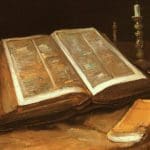 negatively, as that which prevents personal access to truth and enlightenment (thus with different nuances, The Song of the Bird, 36, 46-47, 50ff, 215). “When you no longer need to hold on to the words of the Bible, it is then that it will become something very beautiful for you, revealing life and its message. The sad thing is that the official Church has dedicated itself to framing the idol, enclosing it, defending it, reifying it without being able to look at what it really means” (“La iluminación es la espiritualidad,” 66). Similar ideas are presented in “The Prayer of the Frog” I, 7, 94, 95, 98-99: “A public sinner was excommunicated and forbidden entry to the church. He took his woes to God. ‘They won’t let me in, Lord, because I am sinner.’ ‘What are you complaining about?’ said God. ‘They won’t let me in either!’” (ibid., 105).
negatively, as that which prevents personal access to truth and enlightenment (thus with different nuances, The Song of the Bird, 36, 46-47, 50ff, 215). “When you no longer need to hold on to the words of the Bible, it is then that it will become something very beautiful for you, revealing life and its message. The sad thing is that the official Church has dedicated itself to framing the idol, enclosing it, defending it, reifying it without being able to look at what it really means” (“La iluminación es la espiritualidad,” 66). Similar ideas are presented in “The Prayer of the Frog” I, 7, 94, 95, 98-99: “A public sinner was excommunicated and forbidden entry to the church. He took his woes to God. ‘They won’t let me in, Lord, because I am sinner.’ ‘What are you complaining about?’ said God. ‘They won’t let me in either!’” (ibid., 105).
Evil is nothing but ignorance, the lack of enlightenment: “When Jesus looks at evil he calls it by its name and condemns it unambiguously. Only, where I see malice, he sees ignorance… ‘Father forgive them, for they do not know what they are doing’” [Lk 23:34] (Wellsprings, 215). Certainly, this text does not reflect the entire teaching of Jesus on the evil of the world and on sin; Jesus welcomed sinners with profound mercy, but he did not deny their sin; rather he invited them to conversion. In other passages we find even more radical statements: “Nothing is good or bad but thinking makes it so” (One Minute Wisdom, 104). “Actually there is no good or evil in persons or in nature. There is only a mental judgment imposed upon this or that reality” (Walking on Water, 99). There is no reason to repent for sins, since the only thing that matters is to be awakened to an awareness of reality: “Don’t weep for your sins. Why weep for sins that you committed when you were asleep?” (Awareness, 26; cf. ibid., 43, 150). The cause of evil is ignorance (One Minute Nonsense, 239). Sin exists, but it is an act of insanity (“La iluminación es la espiritualidad,” 63). Repentance therefore means returning to reality (cf. ibid., 48). “Repentance is a change of mind: a radically different vision of reality” (One Minute Nonsense, 241).
Clearly, there is an internal connection between these different positions: if one questions the existence of a personal God, it does not make sense that God would address himself to us with his word. Sacred Scripture, therefore, does not have definitive value. Jesus is a teacher like others; only in the author’s early books does he appear as the Son of God, an affirmation which would have little meaning in the context of such an understanding of God. As a consequence one cannot attribute value to the Church’s teaching. Our personal survival after death is problematic if God is not personal. Thus it becomes clear that such conceptions of God, Christ and man are not compatible with the Christian faith.
For this reason, those responsible for safeguarding the doctrine of the faith have been obliged to illustrate the dangers in the texts written by Father Anthony de Mello or attributed to him, and to warn the faithful about them.
NOTES:
1. Not all the works of Father de Mello were authorized for publication by the author himself. Some were published after his death based on his writings, or on notes or recordings of his conferences. In this Explanatory Note, the following editions of his writings are cited: Sadhana: A Way to God (St. Louis, USA: The Institute of Jesuit Sources, 1978); The Song of the Bird (Anand, India: Gujarat Sahitya Prakash, 1982); Wellsprings: A Book of Spiritual Exercises (Anand, India: Gujarat Sahitya Prakash, 1984); One Minute Wisdom (Anand, India: Gujarat Sahitya Prakash, 1985); “La iluminación es la espiritualidad: Curso completo de autoliberación interior” in Vida Nueva (1987) pp. 27/1583 – 66/1622; The Prayer of the Frog, 2 vols. (Anand, India: Gujarat Sahitya Prakash, 1989); Awareness (London: Fount Paperbacks, 1990); Contact with God: Retreat Conferences (Anand, India: Gujarat Sahitya Prakash, 1990); Call to Love: Meditations (Anand, India: Gujarat Sahitya Prakash, 1991); Caminhar sobre as águas: Quebre o ídolo (São Paulo, Brazil: Edições Loyola, 1992), engl. trans. Walking on Water (New York: Crossroad, 1998); One Minute Nonsense (Anand, India: Gujarat Sahitya Prakash, 1992).
2. The Letter of the Congregation for the Doctrine of the Faith On Some Aspects of Christian Meditation Orationis formas (15 October 1989) seems to make reference to such ideas: “Still others do not hesitate to place that absolute without image or concepts, which is proper to Buddhist theory, on the same level as the majesty of God revealed in Christ, which towers above finite reality” (n. 12: AAS 82 [1990], 369). In this regard, it is also appropriate to recall the teachings on inculturation and interreligious dialogue in the Encyclical Letter of John Paul II Redemptoris missio (cf. nn. 52-57: AAS 83 [1991], 299-305).
Vatican Information Service, 22 August 1998.
+
Editor’s Note: Part I of this two-part series can be found by clicking here.
Art for this post on Fr Anthony de Mello: Tony de Mello (Fr Anthony de Mello), Mihai Andrei, 2005-10-28, CC-Universal Public Domain; Prônam Mudrá, Marcocarvalho, 2005 own work, CC; Still life with Bible, Vincent van Gogh, 1885, PD-US, PD-art; Wikimedia Commons. Fr Anthony de Mello, unknown photographer, undated, from uncopyrighted site. Pope Benedict XVII, file copy.


